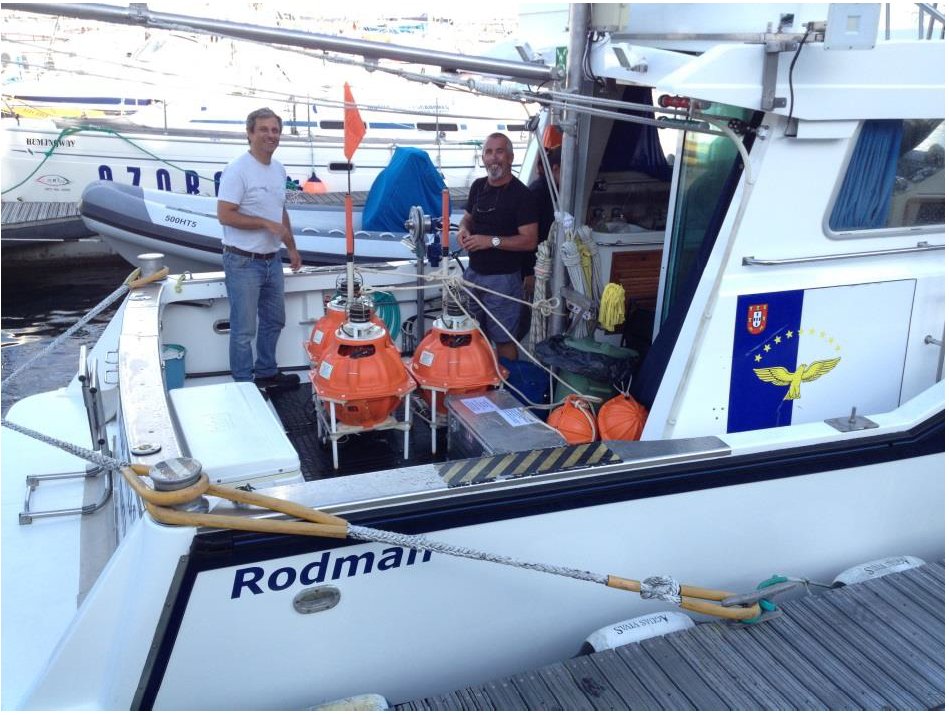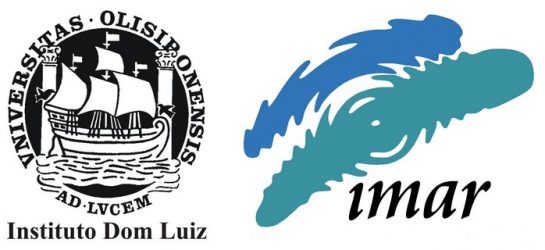Tarefa 1: Observações visuais e acústicas
Land-based visual and acoustic observations

This task will provide a long-term dataset of synchronized visual and acoustic detections of fin whales that will be used to estimate context-specific vocalization rates (Task 3), identify new calls (Task 4), develop algorithms to estimate detection ranges and source locations for acoustic recorders (Task 5) and estimate ambient noise levels (Task 6). Simultaneous visual and acoustic observations will be carried out for 2 years from late autumn to early summer, to coincide with the peak migration of fin whales through the Azores (Silva et al., 2013, 2014; Prieto et al., 2016). A network of 4 autonomous hydrophones (EARs; Lammers et al., 2008) and 5 OBS will be moored in the vicinity of Faial island to record fin whale sounds and allow the localization of vocalizing whales. The EARs will be set up to record on a duty cycle to frequencies up to 1000 Hz. Every 4 months the EARs need to be recovered (using acoustic releases) for refurbishing and downloading the data. The OBS can record continuously for 7 months on the 0-100 Hz frequency band. Visual observations will be conducted daily from a cliff top overlooking the deployment area. Two observers will scan the area in the vicinity of the acoustic array to record the number, position and collect behavioural information of every fin whale seen.
Recordings with concurrent visual observations will be aurally and visually inspected. Positions of vocalizing whales will be estimated from the differences in the time of arrival of calls at the 4 EARs and at the 5 OBS and compared to locations and timing of visually detected whales. Only acoustic and visual data from whales seen in vicinity of the array will be used to assign calls to individual whales. All recordings with concurrent visual observations will be used to investigate relationship between call density and number of whales present.
Expected results of this task are:
1) Successfully completed synchronous visual-acoustic observations for 2 years (7 months);
2) A comprehensive database of sounds attributed to fin whales with information on time and behavioural activity (and in some cases sex of the individual).
IMAR will be responsible for deploying the EARs and OBS, developing a protocol for the land-based visual surveys and conducting the work. Processing and analysis of EAR and OBS data will be conducted by both partners. The EAR and OBS are owned by the IMAR and IDL, respectively, and available to use in the project but one acoustic release for deployments over 1000m depth needs to be purchased. Four days per year of ship time will be necessary for deploying and retrieving the EAR and OBS. Other expenses include batteries for the EAR, OBS and acoustic releases, hard drives for the EAR and office consumables. Equipment for visual observations is available from IMAR. One Research Fellowship (BI) is needed to assist with visual observations and processing acoustic data.

